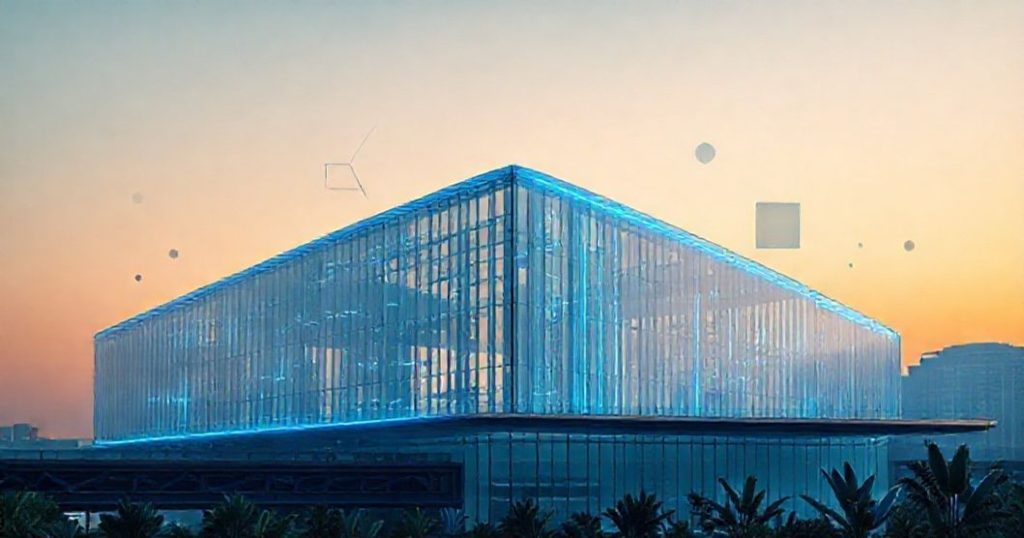Introduction to AI Image Generation for Architectural Visualization
Architectural visualization has undergone a significant transformation with the advent of AI image generation. This technology has empowered architects, designers, and students to create stunning, professional-grade images in a matter of seconds. The days of tedious manual rendering are behind us, and the future of visual content creation has never been brighter. In this comprehensive guide, we’ll delve into the world of AI image generation, exploring its applications, benefits, and best practices for architectural visualization.
The integration of AI into the creative workflow has democratized access to high-quality visual content. No longer do architects and designers need to invest countless hours in mastering complex software or hiring external professionals. With AI image generation, the barriers to entry have been significantly lowered, allowing a broader range of creators to bring their visions to life. This shift is not just about efficiency; it’s about empowering imagination and fostering innovation in the field of architecture.
At the heart of this revolution is the concept of prompt engineering. Crafting the right prompt is akin to conducting a symphony – each word, each phrase, and each instruction must harmonize to produce a masterpiece. The AI, in this context, acts as a sophisticated instrument, interpreting and executing the creator’s vision with precision and speed. Understanding how to communicate effectively with these AI models is crucial for unlocking their full potential and achieving the desired outcomes.
As we navigate this exciting landscape, it’s essential to recognize the role of different AI models and their specializations. From the photorealistic capabilities of models like DALL-E to the artistic flair of Midjourney, each platform offers unique strengths and weaknesses. The choice of model can significantly influence the final product, making it vital for creators to experiment and find the tools that best align with their aesthetic and technical requirements.
In the following sections, we will explore the intricacies of AI image generation for architectural visualization, including the fundamentals of AI technology, practical strategies for effective prompt engineering, and the applications of AI-generated images in real-world scenarios. Whether you’re a seasoned architect or an aspiring designer, this guide is designed to provide you with the knowledge and skills necessary to harness the power of AI and elevate your creative work.
Understanding AI Image Generation Technology
AI image generation is built upon complex neural networks that learn from vast datasets of images and text descriptions. This process, known as training, enables the AI to understand the nuances of language and the visual elements that correspond to specific words and phrases. When a user inputs a prompt, the AI navigates through its learned representations, generating an image that matches the provided description. This technology has evolved significantly, with current models capable of producing images that are often indistinguishable from those created by human photographers or designers.
The implications of this technology extend far beyond the realm of architecture. It has the potential to revolutionize industries such as advertising, film production, and even education, by making high-quality visual content accessible to a wider audience. However, as with any powerful tool, there are also challenges and ethical considerations that must be addressed. Issues such as copyright, ownership, and the potential for misuse are at the forefront of discussions surrounding AI image generation.
Despite these challenges, the benefits of AI image generation for architectural visualization are undeniable. It offers a level of flexibility and speed that traditional rendering methods cannot match. Architects can now explore multiple design iterations in a fraction of the time, receiving instant feedback on their ideas and making adjustments accordingly. This iterative process not only streamlines the design phase but also enhances creativity, as designers are free to experiment without the burden of lengthy rendering times.
The future of architectural visualization is intertwined with the advancement of AI technology. As models become more sophisticated and accessible, we can expect to see even more innovative applications of AI image generation. From interactive, immersive experiences to entirely new forms of architectural expression, the possibilities are vast and exciting. For those looking to stay at the forefront of this revolution, understanding the fundamentals of AI image generation and staying updated on the latest developments is crucial.
Practical Strategies for Effective Prompt Engineering
Prompt engineering is an art that requires a deep understanding of how AI models interpret and process language. The goal is to craft prompts that are clear, concise, and descriptive, providing the AI with the necessary information to generate an image that meets your expectations. This involves not just describing the physical attributes of the subject but also conveying the mood, atmosphere, and style you envision.
A well-crafted prompt can make all the difference in the quality of the generated image. It’s about finding the right balance between detail and ambiguity, allowing the AI the freedom to interpret and create while still guiding it towards your desired outcome. Experimentation is key, as what works for one model or scenario may not work for another. Developing a keen sense of how different prompts influence the output is essential for mastering AI image generation.
Another critical aspect of prompt engineering is understanding the limitations and biases of the AI models. Each model has its unique characteristics, strengths, and weaknesses, which can significantly impact the generated images. Being aware of these factors allows creators to tailor their prompts more effectively, compensating for potential biases and leveraging the model’s strengths to achieve the best possible results.
Furthermore, the community of AI image generation users plays a vital role in the development of prompt engineering strategies. Sharing knowledge, tips, and experiences among creators helps to advance the field, as collective insights and discoveries can lead to breakthroughs in how we interact with and guide AI models. This collaborative approach not only enhances individual skills but also contributes to the broader evolution of AI technology.
Applications of AI-Generated Images in Architectural Visualization
The applications of AI-generated images in architectural visualization are diverse and rapidly expanding. From conceptual design to final presentation, AI can assist in creating compelling visual narratives that communicate the essence of a project. Whether it’s generating photorealistic renderings of buildings, designing interior spaces, or visualizing urban landscapes, AI image generation offers unparalleled flexibility and creativity.
One of the most significant advantages of AI image generation in this context is its ability to facilitate rapid design iteration. Architects can quickly explore different design options, Materials, and lighting conditions, receiving immediate visual feedback. This process not only accelerates the design phase but also enables a more iterative and exploratory approach, leading to more innovative and effective design solutions.
Moreover, AI-generated images can be used to enhance client presentations, making complex architectural concepts more accessible and engaging. The ability to produce high-quality visuals quickly and efficiently allows architects to focus on the creative and technical aspects of their work, rather than spending extensive time on manual rendering. This shift in workflow can lead to improved client satisfaction, as well as increased competitiveness in the architectural services market.
As architectural visualization continues to evolve, the integration of AI image generation will play a pivotal role. The technology has the potential to democratize access to high-quality visual content, empowering a broader range of creators to produce stunning, professional-grade images. Whether you’re an architect, designer, or simply someone interested in the intersection of technology and art, the world of AI image generation for architectural visualization offers a wealth of creative possibilities and opportunities for innovation.
Conclusion
In conclusion, AI image generation for architectural visualization represents a paradigm shift in how we approach visual content creation. By harnessing the power of AI, architects and designers can unlock new levels of creativity, efficiency, and innovation. As we move forward in this exciting journey, it’s essential to stay informed about the latest developments, best practices, and ethical considerations surrounding AI technology.
For those looking to dive into the world of AI image generation, the key takeaways are clear: understand the technology, develop your prompt engineering skills, and stay curious. The community of creators and developers is continuously pushing the boundaries of what’s possible, and being part of this vibrant ecosystem can be incredibly rewarding.
As we explore the vast potential of AI image generation, we’re reminded that the true magic happens at the intersection of human creativity and technological innovation. The future of architectural visualization is not just about the images we create but about the stories we tell, the emotions we evoke, and the connections we make through our work. With AI by our side, the possibilities are endless, and the journey ahead promises to be nothing short of extraordinary.
Start your creative journey today with Icebox AI, your partner in unlocking the full potential of AI image generation for architectural visualization. Discover how our platform can empower your creativity, streamline your workflow, and bring your most ambitious projects to life.



